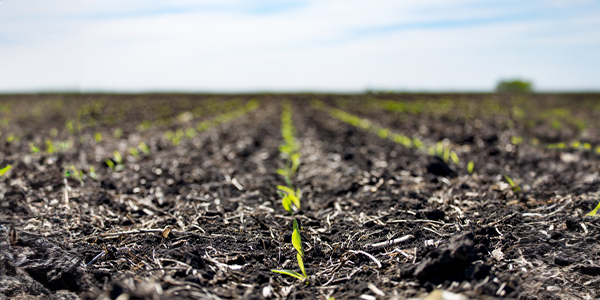AGRONOMIC RESOURCESTO SUPPORT EVERY SEASON
YOU CAN TAKETO THE FIELD
Micronutrients: The Small, Secret Ingredients to Corn and Soy Success
Sometimes, it’s the little things that make all the difference.
Baking soda in chocolate chip cookies. Nutmeg in apple crisp. That splash of vanilla in Aunt Gertrude’s famous pecan pie.
These “minor” ingredients may not be the stars of the show. But without them, it’s doubtful these desserts would earn a blue ribbon at the county fair.
The same notion rings true with essential nutrients for your corn and soybeans. Macronutrients—nitrogen, phosphorus, potassium, calcium, magnesium and sulfur—may get all the glory, but micronutrients play a vital role in crop growth and development.
In fact, they may be the secret ingredients to ensure your grain bins are busting after the harvest.
What are the eight micronutrients, and why are they important?
Copper (Cu):
Copper is essential to chlorophyll and seed production. When your fields are deficient, you can count on a lower yield. Furthermore, copper deficiency can lead to disease susceptibility… and that’s not good for your harvest check.
Iron (Fe):
Soils are often rich in iron, but iron availability can vary and often decreases in soils with a high pH. In soybeans, iron is essential for nodule formation and thus nitrogen fixation—which is pretty important.
Manganese (Mn):
Manganese is important for nitrogen metabolism and root growth, and a deficiency can lead to big yield losses. It’s important to correctly identify manganese deficiency in soybeans because it often looks similar to a lack of iron. Here’s the good news: soybeans usually show a significant response when fertilized with manganese.
Zinc (Zn):
It may seem insignificant, but here are the facts: corn needs zinc. And more than other micronutrients, a zinc deficiency may really hold back your corn’s performance. A zinc deficiency can cause stunted growth, poor root development, and delayed tasseling and silking. All of that leads to one thing—lower yields. If you’re growing corn, be sure your soil is rich in zinc and that it’s available.
Boron (B):
Corn and soybeans don’t need much boron, but without it, you can kiss your harvest check goodbye. Boron deficiency in corn results in short cobs and barren ears. In soybeans, plants have stunted roots, and flowering basically stops. But just a smidge too much boron can lead to toxicity, so it’s important to get the balance right.
Chloride (Cl):
Chloride is essential for cell hydration and maintaining turgor pressure, which keeps plants standing up straight. Because it is an anion (negatively charged), it also functions as an important transport molecule for other essential nutrients.
Nickel (Ni):
A relative latecomer to the list of essential plant nutrients, nickel is undoubtedly vital. Deficiency can reduce leaf tissue expansion. In soybeans, nickel can help with nitrogen metabolism and nodule formation.
Molybdenum (Mo):
When you think about molybdenum, you’d better think about nitrogen (and all the corn farmers’ ears perk up). Molybdenum plays an important role in an enzyme reaction that converts nitrate into ammonium in the plant. No Mo = little nitrogen (and little corn yields).
Big-ticket macronutrients consume most of our soil fertility brain space, but be sure to leave a little room for the smaller ones. Soil tests and, if necessary, tissue tests, are vital tools to implement to take stock of micronutrients in your fields. Reach out to your LG Seeds agronomist, so your reliable partner can help you identify the micronutrient needs on your farm.






Agronomy Team